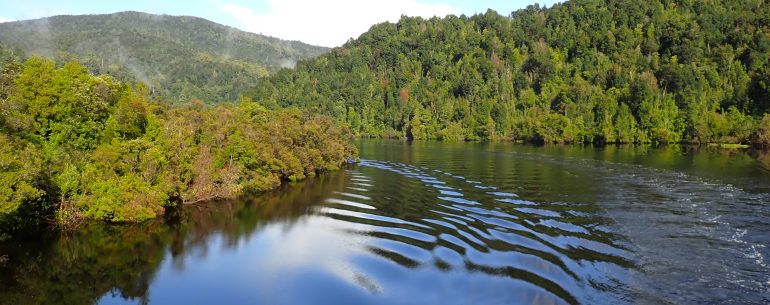The Gordon (and Franklin) river(s) were subject to an intense and polarised environmental battle in the early 1980s. The nascent green movement which had coalesced in the battle against the dams which created Lake Pedder strengthened and organised to fight the proposed Gordon-below-Franklin Dam (more usually known as the Franklin Dam). This would have submerged much of the wilderness area which is now national park and, although there was significant local support for the jobs which would be created, the green movement fought hard and it became a national and even international issue.
Luckily for us, the green movement won as we went on a boat trip along the Gordon River today. It might have been a very different trip if the result had gone the other way! The boat left Strahan and headed initially out through Hell’s Gates. This name comes from the fact that the convicts entering into Macquarie Harbour thought they were coming to hell …. In fact they were coming to the more prosaically named Sarah Island, but more of that later.
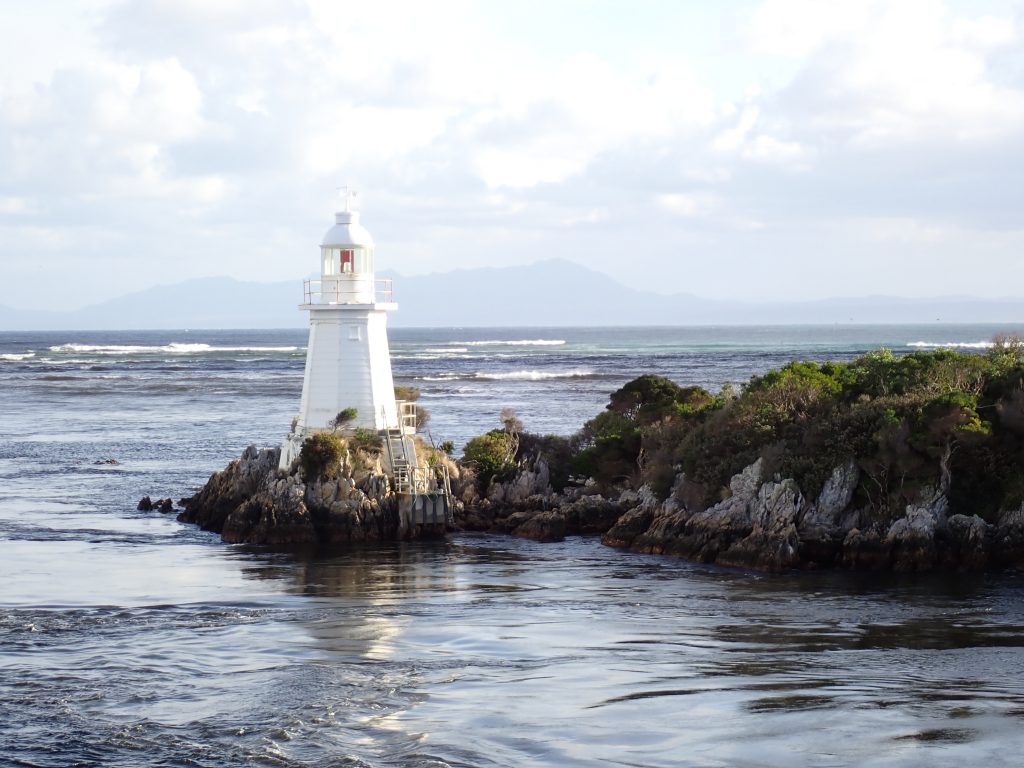
Going through Hell’s Gates gave us a nice view of Ocean Beach which we had visited yesterday, but with a bit of a swell rolling in, the skipper turned fairly quickly to take us back to Hell. Actually the hell in this case may be a hell on earth for fish. The harbour is the base for one of the biggest fish farm operations in Australia. Like fish farms all around the world, this is controversial. The farms provide local jobs, but the effective industrialisation of fish production brings with it a host of environmental issues. One problem is de-oxygenated “dead zones” beneath pens and there have been significant mortalities as the intensity of production has increased. The commentary on board the boat told us that the area was ideal and the fish were less likely to suffer from the parasitic sea lice as the mixing of fresh from the rivers and salt from the sea caused the lice to be killed off. However, this was not backed up with any evidence, so the jury is still out for me …. In fact many of the practices at the farms have been questioned and the EPA recently reduced the farms’ capacities.
From there we headed towards the mouth of the Gordon River at about 24 knots and a sudden slowing down and switch to electric drive told us that we had arrived there. The river scenery is stunning – pristine wilderness – pure and unsullied(ish). We pottered down the river with the vistas changing at each bend until we reached the Heritage Landing. Here we were able to go ashore for a short walk through the rainforest.
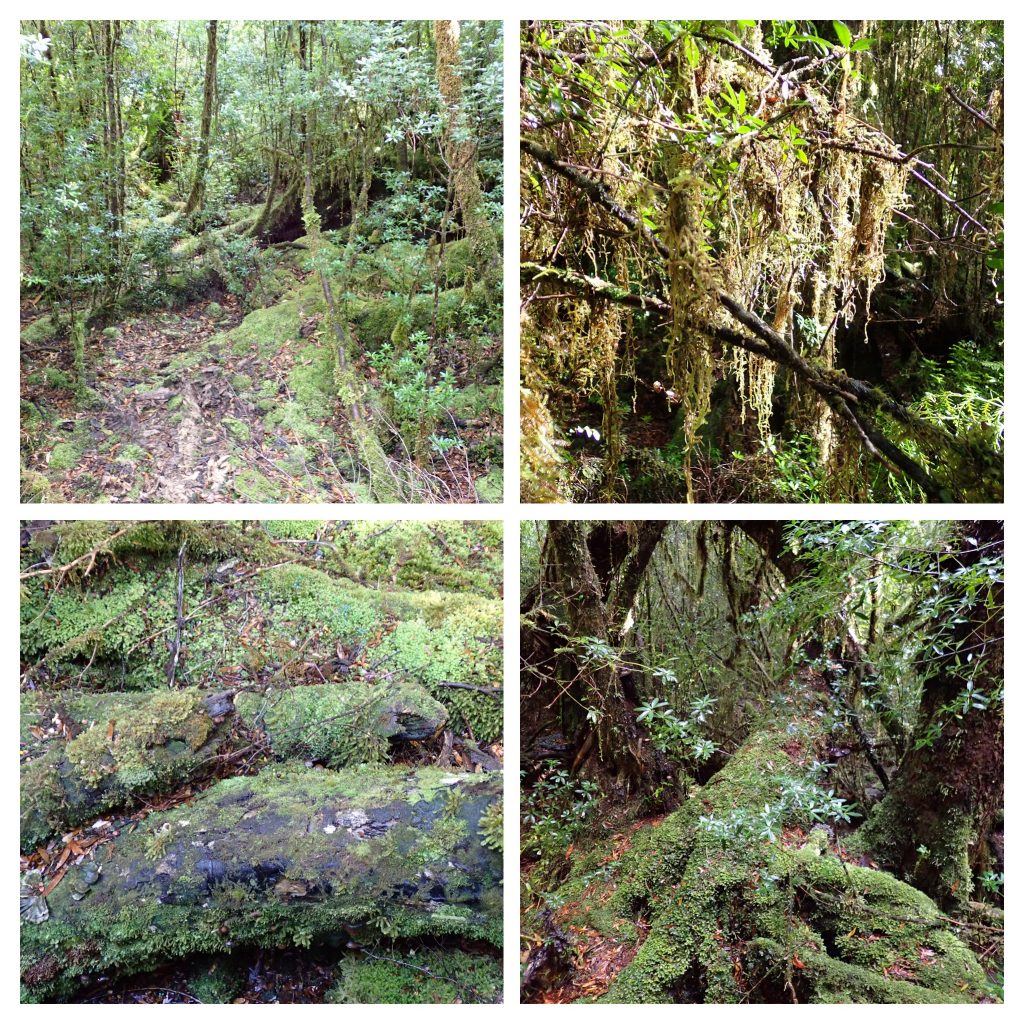
This rapidly turned into a mushroom hunting exercise and gradually more and more people got roped into the hunt with some interesting discoveries. The poor boat staff had to keep hassling us from behind and encourage us to get back on board the boat.
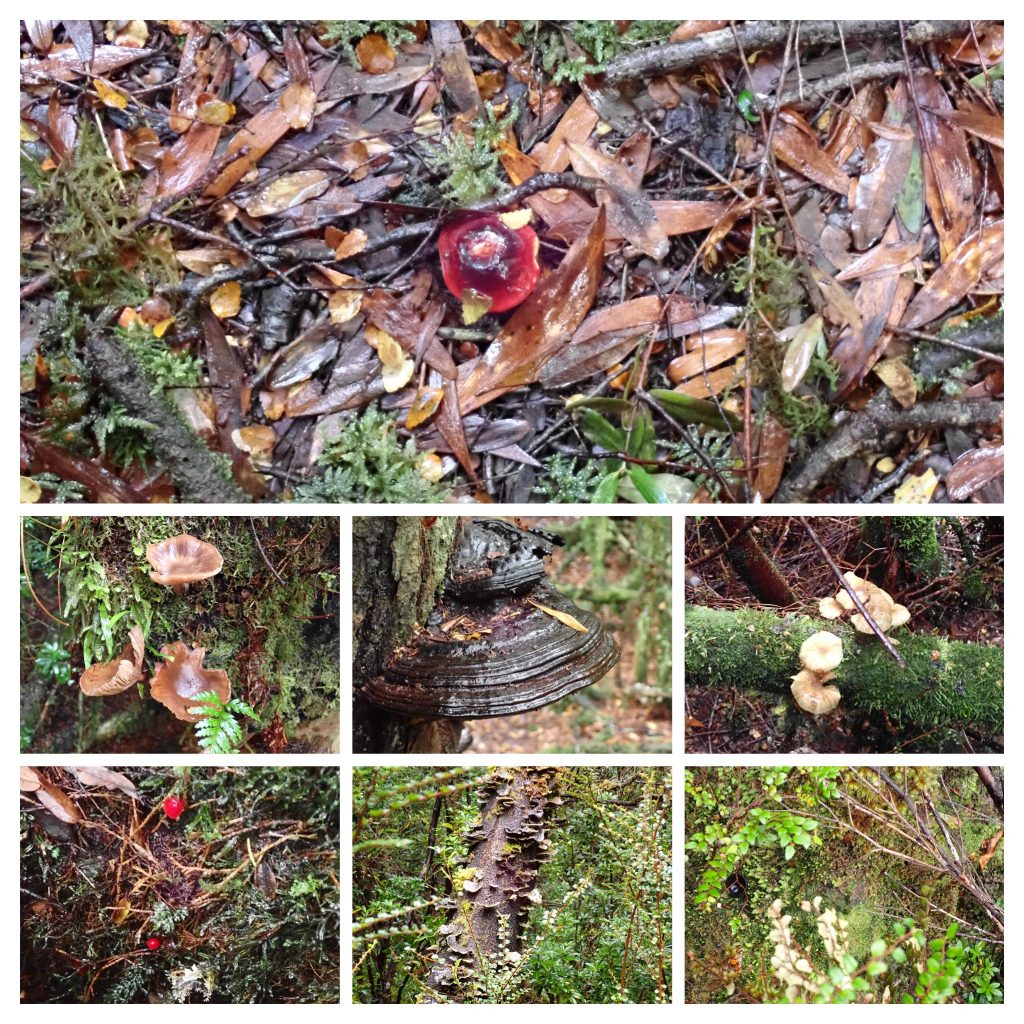
Our reward for being nudged back aboard was lunch and a gentle cruise back down the Gordon River to Sarah Island. The name evokes a nice gentle peaceful island where ladies with parasols drink tea in the sunshine and eat scones and jam. The reality was completely the opposite. This was the Hell the convicts were referring to when they entered Macquarie Harbour. Sarah Island was a penal penal colony – in other words it was for convicts who had re-offended – the mean recidivists as our guide put it. The guide was from a theatre company and the theatrics accompanying the commentary helped bring it all to life.
The aim of the colony was to punish, but also to be economically viable, so they started by stripping the island of all its vegetation. The thought processes behind this were clearly not well-formed as this opened the island up to the full force of the wind, so instead they built a wall, up to 30′ high in places, out of huon pine. The huon pine was why they were here. Lagarostrobos franklinii is a species of conifer native to the Macquarie region and it is usually known as the Huon pine or Macquarie pine. In fact is not a true pine but a podocarp. However, they didn’t care about that, they cared that this was one of the best boatbuilding materials around, so the job of the convicts was to fell pine, strip it and then transport it to dry out on Sarah Island ready to ship to the boatbuilding yards in Hobart.
However, the convicts were much quicker than the ships and so the stocks of Huon pine accumulated on the island. This clearly started the cogs whirring of the government officials responsible and various light bulbs popped up above their heads suggesting – what if we built the boats on Sarah Island rather than transporting the wood? So, they did … After a while the regime on the island changed from perhaps the most brutal imaginable (lashings were frequent and vicious – 9,100 lashes were given in 1823) to one where the convicts were taught boat building skills and produced boats up to 250 tons from the shipyard on the island. Now, instead of trying to escape, many convicts were trying to get transported to Sarah Island.
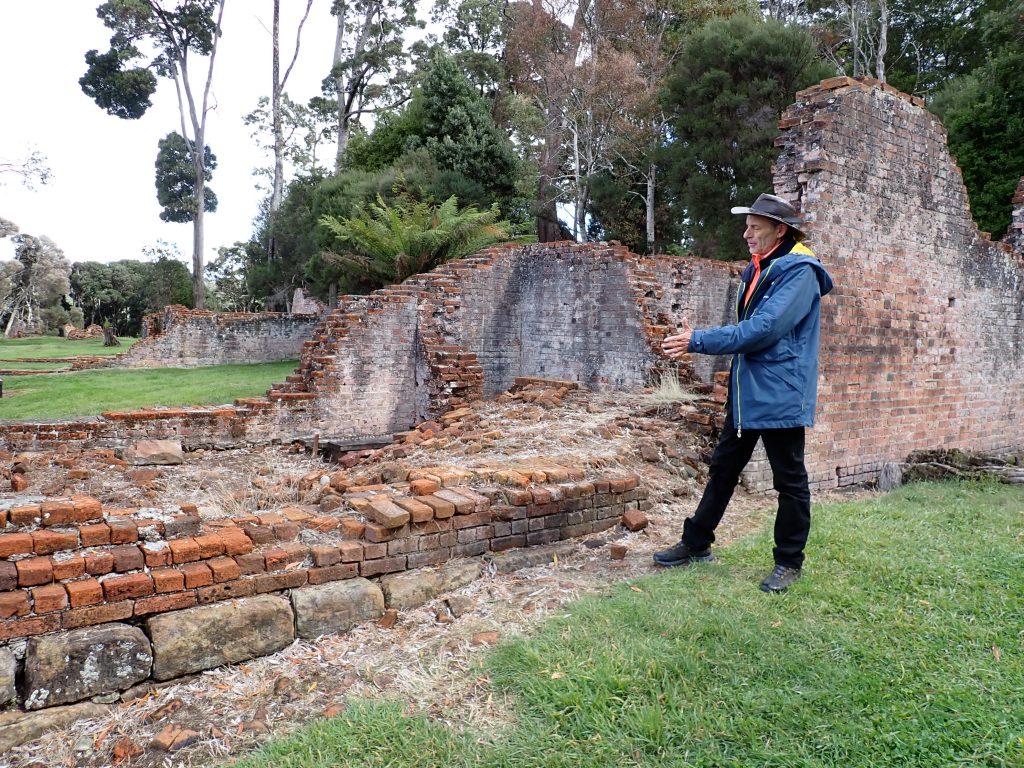
In the early days though, many tried to escape but with limited success. Perhaps the best known was a convict called James Goodwin. He managed to escape the island and made his way cross country to Hobart, even producing a map of exactly where he had gone. This made him possibly the first person to traverse Tasmania from west to east, so when he was re-captured in Hobart, instead of sending him back to Sarah Island, they employed him in the surveyor’s office!
However, when George Arthur – the Governor General of Van Diemen’s Land – realised that the island was no long the punitive environment he wanted, he closed it down and had the prisoners all transferred to the newly-built Port Arthur site near Hobart. Sounds like a familiar story when it comes to penal reform measures!
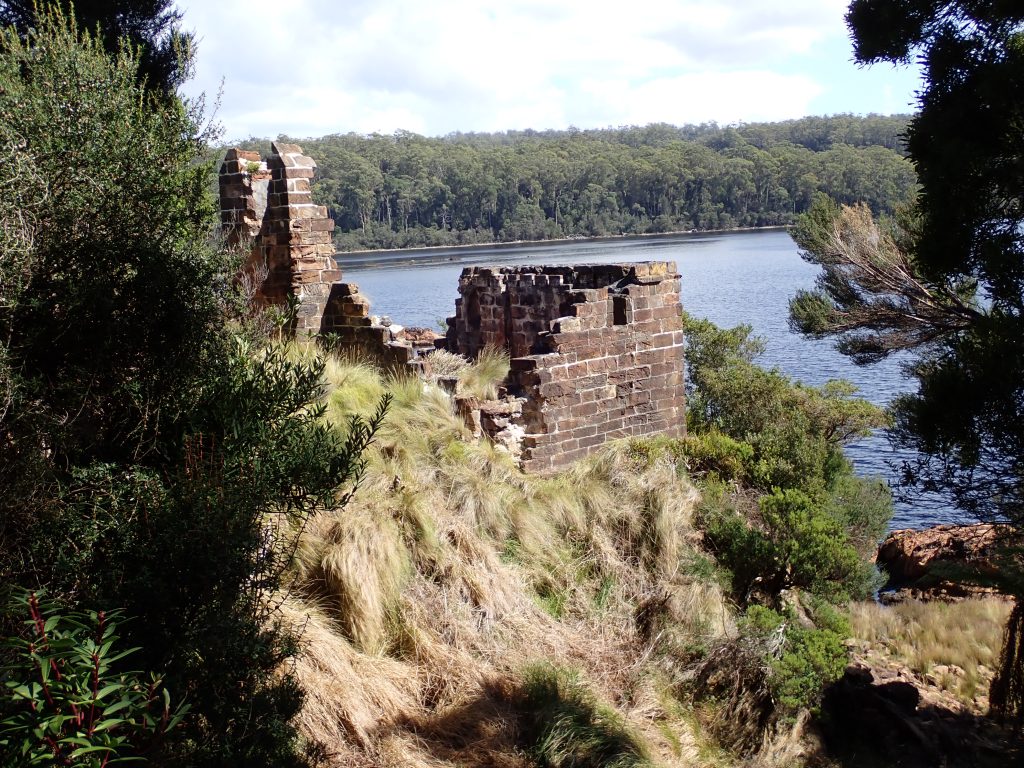
Late afternoon we went to the longest running play in Australia. The play is called The Ship That Never Was and was originally debuted in Hobart in 1984. It then transferred to Strahan in 1993 and the Round Earth Theatre Company has been offering it seven days a week (sometimes twice a day) ever since. The term pantomime may be more appropriate than play as extensive audience participation is required. With just two actors, the audience are drawn in to represent all the other characters – including even jellyfish (described by the lead as a ‘spineless’ performance) and the ship’s cat. The audience were even given water spray bottles to provide the spray for the storm and paper bags to provide the sound effects for the musket shot! Extensive singing, booing and finishing sentences on cue added to the overall pantomime effect. Asked beforehand, I might have said that I was far too old for pantomime, but afterwards had definitely changed my tune. The energy and flair of the actors in improvising and engaging the audience was remarkable and made for a sometimes exhausting, but very entertaining hour and a quarter.
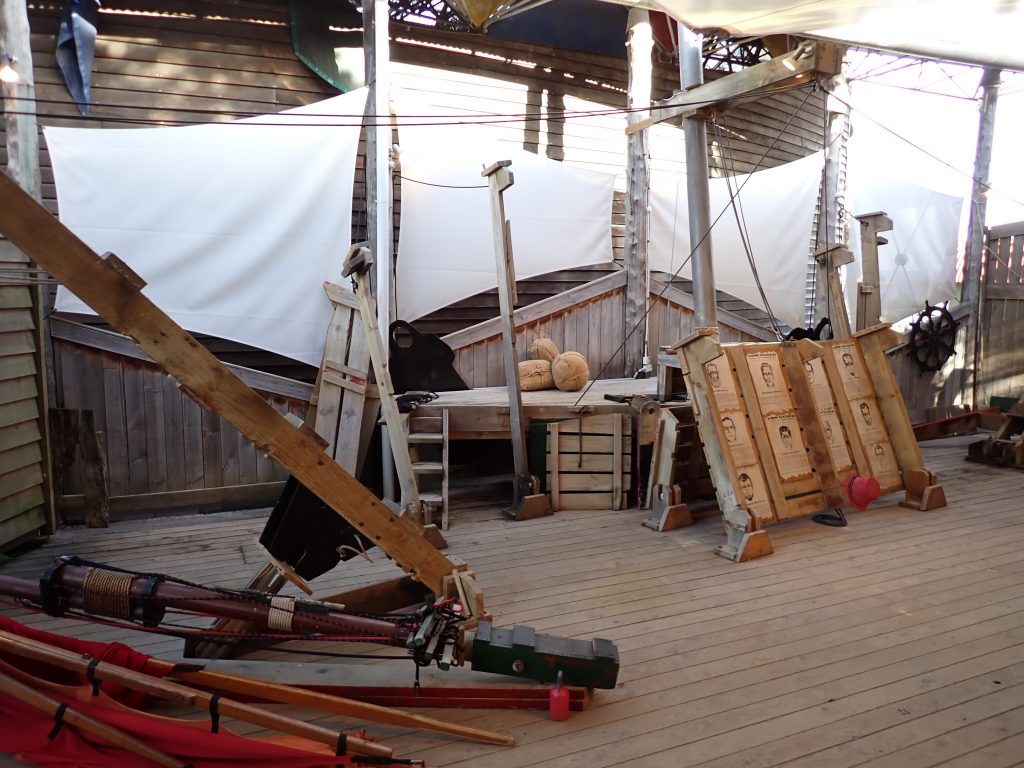
The play tells the story of the Frederick. She was the last ship ever built on Sarah Island and in January 1834 ten convicts (led by James Porter) overpowered their skeleton guard of soldiers and hijacked the Frederick. They managed to sail her all the way to Chile where the Governor of Valdivia allowed them to stay. However, two years later the new governor was more suspicious and reported them to a passing Royal Navy ship – HMS Blonde (interestingly no jokes about that!). The four remaining convicts were seized and taken back to the UK and then shipped once again to Van Diemens Land where they were charged with piracy – this was at the time a hanging offence, so they had nothing to lose by appealing. In fact they found a legal loophole. Porter and Shires argued that as the Frederick had not been officially launched, it wasn’t really a boat: “It was canvas, rope, boarding and trenails, put together shipwise—yet it was not a legal ship; the seizure might have been theft, but not piracy.” They also argued that because the Frederick was taken in Macquarie harbour rather than at sea, it could not have been piracy. They were not hanged, but transported to Norfolk Island.
